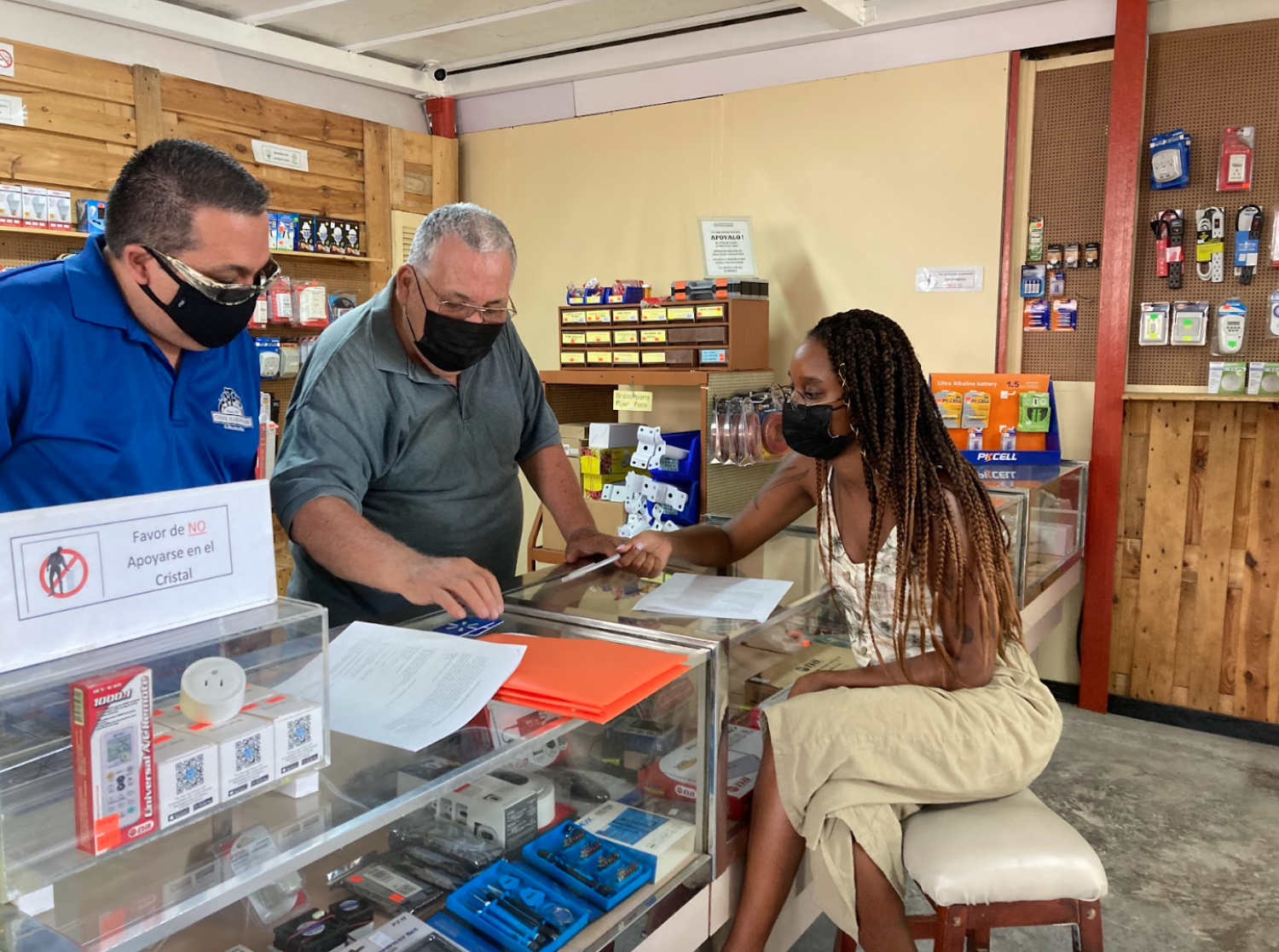Building Capacity for Safer Shelter: Leveraging Local Understanding and Advanced Engineering Assessments
Summary
Disasters cause incredible damage and destruction to infrastructure, particularly in the housing sector. To respond to these events and to mitigate potential damage in future events, practitioners and scholars have emphasized community participation and the importance of "building back better." However, there remains a dearth of literature that analyzes the expected safety of reconstructed shelter and how households perceive the safety of their shelter. This research seeks to assess the expected safety of reconstructed shelter, analyze household perceptions of shelter safety, characterize (mis)alignments between assessed and perceived safety, and identify strategies to improve shelter safety. This project is focusing on understanding local perceptions of shelter safety and structural performance of homes built after Typhoon Haiyan in the Philippines and Hurricane Maria in Puerto Rico.
Funding
- National Science Foundation (NSF) Division of Civil, Mechanical, & Manufacturing Innovation (CMMI)
- University of Colorado Boulder Innovative Seed Grant
- United States Agnecy for International Development (USAID) Office of US Foreign Disaster Assistance (OFDA) Humanitarian Shelter and Settlements Fellowship
- Department of Education Graduate Assistantship in Areas of National Need (GAANN) Fellowship
Research Questions
- What are the existing local perceptions of safe shelter?
- How are post-disaster shelters expected to perform in future hazard events?
- What (mis)alignments exist between local perceptions of safe shelter and engineering assessments of safe shelter?
- What kind of communication design will enable local organizations to most effectively address and resolve these conflicts?
Research Methods
This research will occur in three phases. In the first phase, we will collect data on household perceptions of the safety of their shelter through a survey. During the next phase, through interviews, observation, and document collection, we will gather data on the design and construction of shelter built after disaster events. Using this information, we will create structural models of the different shelter typologies and conduct performance assessments to determine their expected safety in future hazard events. We will compare the results of our performance assessment to household survey responses, identifying any differences. We will use the results of the study to create a communication intervention that displays best practices to improve shelter safety.
Findings
In the Philippines, we surveyed respondents in ten communities that received shelter assistance after Supertyphoon Haiyan, and we found that an overwhelming majority of households expect their shelter to be significantly damaged in a future typhoon. The shelter components that were expected to experience the most damage in a typhoon were the roof covering and roof structure, but considerable damage was also expected to walls and foundations. On average, surveyed individuals perceived their shelters to be less safe in a typhoon than an earthquake, suggesting that the severity of 2013's Supertyphoon Haiyan was the most influential factor for individuals' perceptions of safety. Additionally, shelter material had a significant influence on perceptions of shelter safety, with those living in wooden houses perceiving their houses to be the least safe. More information about household perceptions of shelter safety in the Philippines can be found here.
Given the frequency and severity of typhoons in the Philippines and households' perceptions of shelter safety in typhoons, we assessed the wind performance of twelve shelter designs. We found that, in another event as strong as Haiyan, the shelters will be destroyed and safety will be compromised, as the roof covering will be removed and the walls will collapse. In weaker storms, analysis of the same shelters revealed that there are two common failure mechanisms: loss of the roof covering or wall racking. Wall racking is expected to occur in shelters with wooden frames and woven, bamboo wall panels. Recommendations to improve shelter wind performance include various changes to the roof design, but the most important recommendation is to ensure adequate wall capacity and a continuous load path in order to prevent catastrophic wall failure.
Lastly, we compared household perceptions of shelter safety with the results from the wind performance assessment and found that at the individual compoennt level, household perceptions were well-aligned with engineering assessments. However, the most important misalignment between household perceptions and the performance assessments was that households often lacked a systems' perspective of the shelter's performance and did not discuss how modifications to one component could affect the performance of other components. These findings suggest that emphasis on how shelters work as a system could support households in making safer design and construction decisions.
The wind performance assessment results can be found here and findings from the (mis)alignments study can be found here, and the complete dissertation focused on shelter safety in the Philippines can be accessed here. This research is ongoing in Puerto Rico.
In Puerto Rico, we began the project by interviewing households, local builders, and nonprofit organization staff and volunteers to understand housing safety perceptions, preferences and priorities in July 2019. After these interviews, Puerto Rico unfortunately experienced a series of earthquakes and aftershocks in the island's southwest region. After these earthquakes, the research team returned to Puerto Rico to conduct interviews to study the changes to housing safety perceptions. The study found that, after the earthquakes, trust in informal construction processes decreased; trust in formal construction processes and self-efficacy increased; and perceptions of expected earthquake damage and views on the relative safety of building materials changed, including a notable shift to doubt the safety of concrete construction. Because household risk and housing safety perceptions directly affect decisions about safe construction materials and practices, it is critical to both understand these perceptions and investigate how these perceptions may change with the experience of a less frequent or less familiar hazard event. The results of this study can be found here.
Then, the research team conducted and analyzed a survey of over 300 Puerto Rican builders and hardware store employees, who frequently informally advise on housing construction, to understand housing safety perceptions. The results of this survey can be found here. Next, we performed wind and seismic performance assessments of informally constructed housing. The wind assessment can be found here while the seismic assessment is currently under review. We compared the findings to engineering performance assessments of informally constructed housing in wind and seismic events in order to identify which housing safety perceptions do and do not align with engineering assessments of safety. The findings of the comparison and identification of misalignments can be found here.
Finally, to build technical construction capacity, we interviewed staff from Puerto Rican community-based organizations and others familiar with hazard planning and preparedness in Puerto Rico to investigate methods to effectively communicate technical recommendations to communities in Puerto Rico. We shared technical recommendations with these individuals in Puerto Rico and then interviewed them to elicit their perspectives and identify the influence of capacity-building programs on self-efficacy and knowledge of mitigation measure efficacy. The manuscript detailing this part of the project is currently under review.

Survey data collection in a hardware store in Puerto Rico (2021)
Articles
- Venable, C., Javernick-Will, A., and Liel, A. (2020). "Perceptions of Post-Disaster Housing Safety in Future Typhoons and Earthquakes." Sustainability, 12 (9), 3837.
- Venable, C., Liel, A., Kijewski-Correa, T., and Javernick-Will, A. (2021). "Wind Performance Assessment of Postdisaster Housing in the Philippines." Natural Hazards Review, 22 (4).
- Venable, C., Javernick-Will, A., Liel, A., and M. Koschmann (2021). “Revealing (Mis)Alignments Between Comparing Household Perceptions and Engineering Assessments of Post-Disaster Housing Safety in Typhoons”. International Journal of Disaster Risk Reduction. 53. https://doi.org/10.1016/j.ijdrr.2020.101976
- Goldwyn, B., Javernick-Will, A., and Liel, A.. 2021. "The Dilemma of the Tropics: Changes to Housing Safety Perceptions, Preferences and Priorities in Multi-Hazard Environments." Natural Hazards Review.
- Lochhead, M., Goldwyn, B., Venable, C., Liel, A., and A. Javernick-Will. (2022). Assessment of hurricane wind performance and potential design modifications for informally constructed housing in Puerto Rico.
- Goldwyn, B., Javernick-Will, A., and Liel, A.B. (2022). "Multi-hazard housing safety perceptions of those involved with housing construction in Puerto Rico." Sustainability.
- Goldwyn, B., González Vega, Y., Javernick-Will, A., and Liel, A.B. (2022). "Identifying misalignments between the informal construction sector's perceptions and engineering assessments of housing safety in future disasters for capacity development." International Journal of Disaster Risk Reduction.



